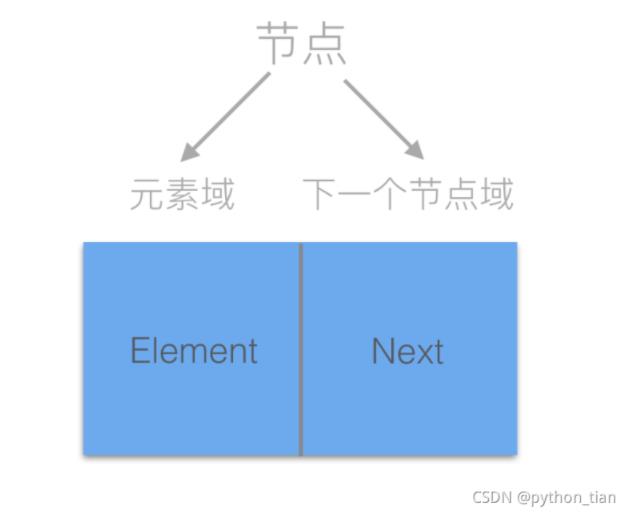本文为大家分享了python链表的基础概念和基础用法,供大家参考,具体内容如下
链表是由多个不同的节点组成,每个节点通过指针区域关联到一起
链表的头指针,指向了头节点,通过头指针可以找到其他节点信息

链表由节点组成,每个节点又包含两个部分,一个是元素区域,一个是指针区域。
元素区域存储的是,当前节点的数值,指针区域指向下一个节点的对象。在C语言中,指针应该是指向下一个元素的的内存地址,因python中不研究指针,这里用下一个节点的对象代替。这样我们就能通过指针区域,找到下一个节点的信息,从而得到下一个节点的值了。

1.先说说数组这种数据结构吧,数组是一块大的连续内存空间。每次初始化需要开辟一大块内存空间,空间利用率比较低。而链表则不同,链表的节点可以随机分布在任何位置,只需通过指针穿引起来即可。
2.在连续的内存空间中,插入一个元素时,所有其他元素的位置也变动了。插入元素、删除元素时候,效率比较低。
链表是非连续的内存空间,每个节点单独存在自己的内存空间,通过指针指向下一个节点。
如果在某个地方插入一个节点,只需要改变指针的指向即可,不用其他元素都变动。
# 实现头部插入 尾部插入 根据索引插入 删除节点并print 打印 # 定义一个节点 class Node: def __init__(self, data): self.data = data self.next = None class SingleLinkList: def __init__(self): self.head = None self.tail = None def is_empty(self): """链表是否为空 :return: """ return self.head is None def length(self): """求当前链表的长度 :return: """ count = 0 cur = self.head while cur is not None: count += 1 cur = cur.next return count def insert_head_node(self, data): """链表头部添加元素 :param data: 要保存的数据 :return: """ node = Node(data) node.next = self.head self.head = node def append_node(self, data): """链表尾部添加元素,有多种实现方式 :param data: :return: """ # 第一种方式 时间复杂度为O(n)的处理方式 node = Node(data) # 如果链表为空,需要特殊处理 if self.is_empty(): self.head = node else: cur = self.head while cur.next is not None: cur = cur.next # 退出循环时, cur指向尾节点 cur.next = node # 第二种 引入一个tail指针 默认当前链表为一个空链表,不停的去append节点 # node = Node(data) # if self.is_empty(): # 当第一次添加节点到空链表中的时候,头指针和尾指针同时指向新节点 # self.head = node # self.tail = node # else: # 当再次添加节点到链表中的时候, 头指针始终指向头节点,尾指针始终执行未节点,如果一直向未节点追加节点,只需移动tail指针即可 # self.tail.next = node # self.tail = node def insert_node(self, pos, data): """指定位置添加元素 :param pos: :param data: :return: """ # 1, 在头部添加 if pos <= 0: self.insert_head_node(data) # 2, 在尾部添加 elif self.length() >= pos: self.append_node(data) # 3, 指定位置添加 else: count = 0 while count < (pos - 2): count += 1 self.head = self.head.next # 这时候self.head 表示当前插入前一个节点 # self.head.next 表示当前插入的后一个节点 node = Node(data) self.head.next = node node.next = self.head.next def delete_node(self, data): """删除节点 :param data: :return: """ cur = self.head # 记录当前节点的位置 pre = None # 记录当前节点位置的前置节点 while cur is not None: # 找到了要删除的元素 if cur.data == data: # 在头部找到了要删除的元素 if cur == self.head: self.head = cur.next return True else: pre.next = cur.next return True else: # 不是要找的元素, 移动光标 pre = cur cur = cur.next def search_node(self, data): """查找节点是否存在 :return: """ cur = self.head while cur is not None: if cur.data == data: return True cur = cur.next return False def reveres_node(self): """链表反转 :return: """ if self.is_empty(): return j = 0 while j < self.length() - 1: cur = self.head for i in range(self.length() - 1): cur = cur.next if cur.next is None: x = cur.data self.delete_node(cur.data) self.insert_node(j, x) j += 1 return self.head